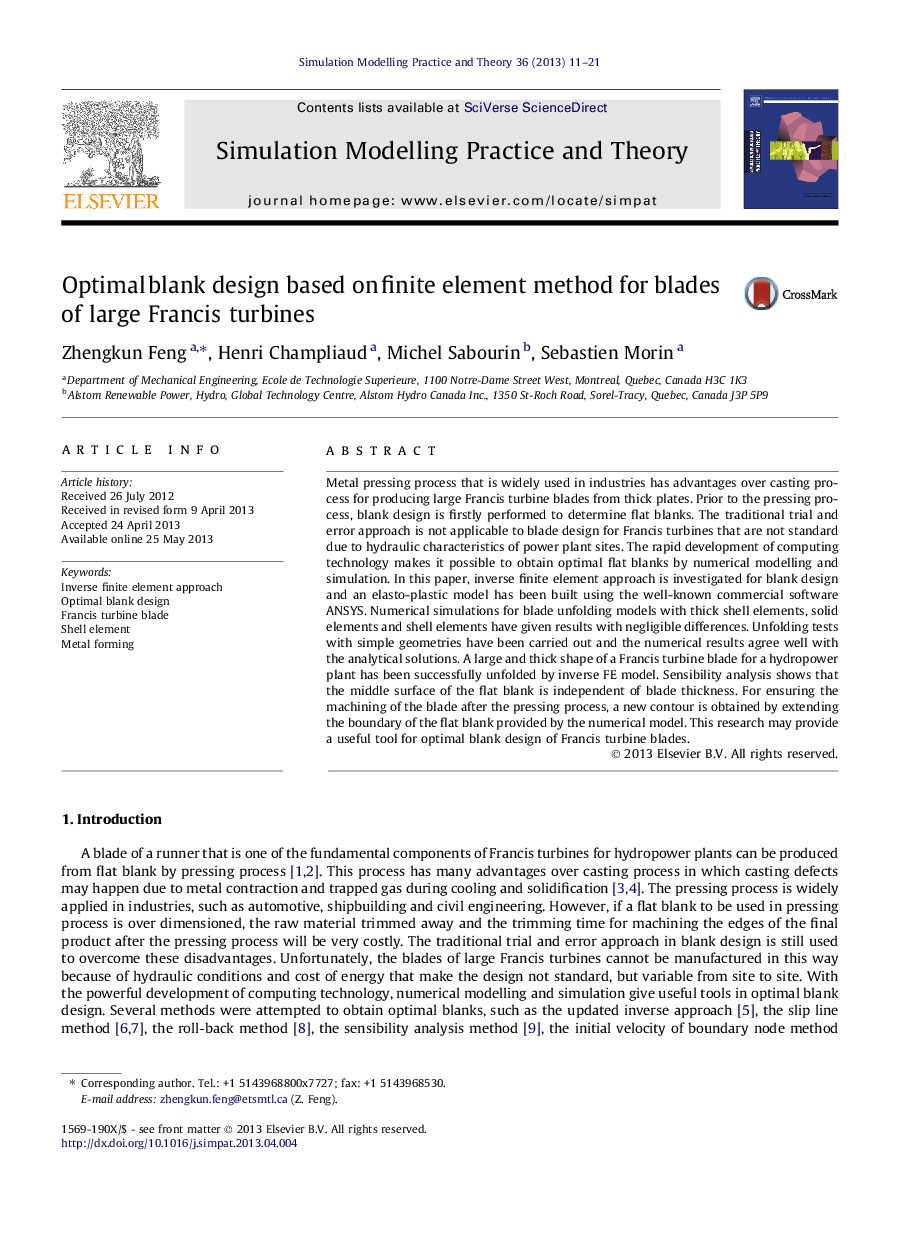| Article ID | Journal | Published Year | Pages | File Type |
|---|---|---|---|---|
| 492492 | Simulation Modelling Practice and Theory | 2013 | 11 Pages |
Metal pressing process that is widely used in industries has advantages over casting process for producing large Francis turbine blades from thick plates. Prior to the pressing process, blank design is firstly performed to determine flat blanks. The traditional trial and error approach is not applicable to blade design for Francis turbines that are not standard due to hydraulic characteristics of power plant sites. The rapid development of computing technology makes it possible to obtain optimal flat blanks by numerical modelling and simulation. In this paper, inverse finite element approach is investigated for blank design and an elasto-plastic model has been built using the well-known commercial software ANSYS. Numerical simulations for blade unfolding models with thick shell elements, solid elements and shell elements have given results with negligible differences. Unfolding tests with simple geometries have been carried out and the numerical results agree well with the analytical solutions. A large and thick shape of a Francis turbine blade for a hydropower plant has been successfully unfolded by inverse FE model. Sensibility analysis shows that the middle surface of the flat blank is independent of blade thickness. For ensuring the machining of the blade after the pressing process, a new contour is obtained by extending the boundary of the flat blank provided by the numerical model. This research may provide a useful tool for optimal blank design of Francis turbine blades.
